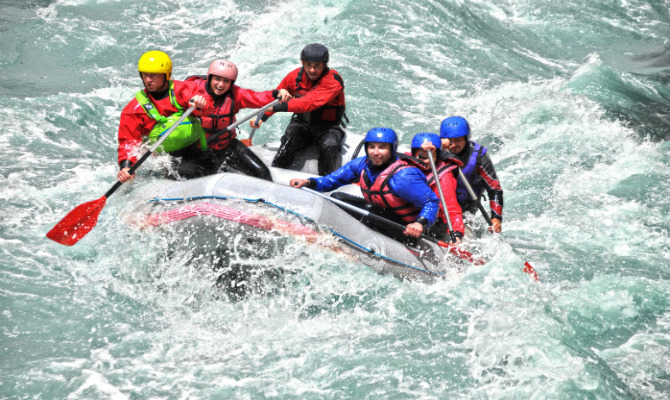Whitewater Rafting: Tips To Better Navigate The Rapids
Rafting is a very exciting sport, but also a hard one. You are not on a boat floating in calm waters; you are in an inflatable vessel cutting through fast and powerful streams. Maneuvering around them is tricky and takes a lot of skills and team work.
Getting injured is a possibility when you don't know what you're doing. Slips, falls and other minor injuries have been reported. Paddling a river is a challenging activity that only looks somewhat easy.
The psychological test is accepting that you depend on the several other people with you in the vessel, who depend on you just as much, but the physical task of riding rushing rapids has a few tricks.
Team work
Every single person in the raft will paddle; no exceptions. It's important to take the position of the paddlers into consideration. Balance is key. You want to go forward and not to the left or right hitting rocks. You don't want to be fighting unbalanced raft because you risk flipping.
Know the difference between water levels
Depth will vary. Deeper rivers are usually calmer and rapids are slow. If the stretches are faster and irregular, the river is most likely shallow, no more than 5 feet deep. Going overboard accidentally is rare – most people do it on purpose for fun – but if you find yourself in the water, float on your back with your feet pointing down the stream.
Hold the paddle right
The inside hand of each paddler (on the side of the boat) should be holding the top of the paddle. The hand that is on the river's side has to be on the stem.
How to move
If you want to go ahead, you have to make move as if you were digging something. This is done by making left hand pull the stem of the paddle towards the aft or the rear end of the raft. The right hand at the same time pushes the top end of the paddle away from him or her. The opposite is done when making the raft move backward.
Turn the raft the proper way
If you want to turn right, you have to paddle on the left side of the raft, and vice versa. If the vessel pivots, you're turning while staying in one place. That's what you need to do when you have to go through a narrow spot.
How to handle an Eddy
An Eddy is a current behind a rock or some other obstacle. It creates a circular motion because it moves against the mainstream current. You want to be in an Eddy if you want to get away from the current. Enter the Eddy at a 45-degree angle to reach the upstream so you can stop.
Staying on track
This is the river. You are not going to be floating in only one direction. In fact, they may change every few seconds, depending on rocks and other hurdles. You always want to be parallel to the current. You can slow down to align by doing back strokes.
More readings:
World's Most Beautiful Places for Open Water Swimming
How the Most Decorated Female Swimmer is Getting Ready for the Olympics
